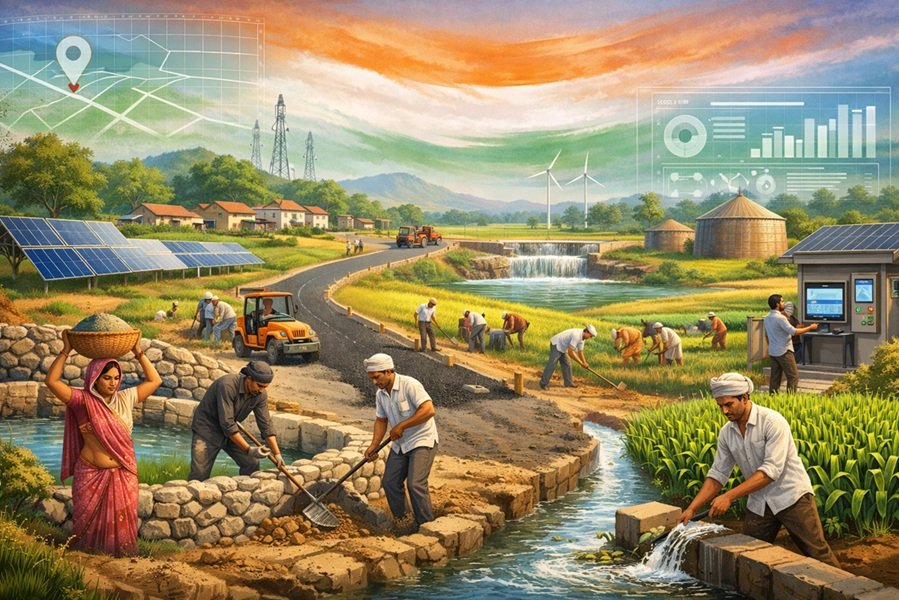
Introduction
An earthquake is a sudden and violent shaking of the ground, often caused by movements within the Earth’s crust or volcanic activity. Earthquakes are one of the most devastating natural disasters, capable of causing massive destruction and loss of life. They have been studied for centuries, yet predicting them with precision remains a challenge.
Causes of Earthquakes
Earthquakes primarily occur due to the movement of tectonic plates. The Earth’s crust is divided into several plates that float on the semi-fluid mantle. When these plates interact, they create stress, which is eventually released as seismic energy, causing an earthquake. The primary causes of earthquakes include:
- Tectonic Movements: The majority of earthquakes occur due to the movement of tectonic plates. These include:
- Divergent Boundaries: Plates move apart, causing tension.
- Convergent Boundaries: Plates collide, creating powerful forces.
- Transform Boundaries: Plates slide past each other, causing friction.
- Volcanic Activity: Some earthquakes occur due to volcanic eruptions, as magma movement disturbs the surrounding rock.
- Human-Induced Causes: Activities such as mining, dam construction, and underground nuclear tests can also trigger earthquakes.
Types of Earthquakes
Earthquakes can be categorized based on their origin and depth:
- Tectonic Earthquakes: Caused by tectonic plate movements, the most common type.
- Volcanic Earthquakes: Associated with volcanic activity.
- Collapse Earthquakes: Occur due to underground cave collapses or mining activity.
- Explosion Earthquakes: Result from nuclear or large-scale chemical explosions.
Based on depth, earthquakes are classified as:
- Shallow-focus Earthquakes: Less than 70 km deep, often the most destructive.
- Intermediate-focus Earthquakes: Between 70 and 300 km deep.
- Deep-focus Earthquakes: More than 300 km deep, usually less damaging.
Measurement of Earthquakes
Seismologists use different scales to measure earthquakes:
- Richter Scale: Measures magnitude (energy released) on a logarithmic scale.
- Moment Magnitude Scale (Mw): More precise than the Richter scale, used for large earthquakes.
- Modified Mercalli Intensity Scale: Measures the intensity and effects of an earthquake on people, buildings, and the environment.
Effects of Earthquakes
The impact of an earthquake varies depending on its magnitude, depth, and location:
- Ground Shaking: The primary effect, damaging buildings and infrastructure.
- Surface Rupture: When the fault breaks the Earth’s surface, creating cracks.
- Landslides: Triggered by ground movement, especially in hilly regions.
- Tsunamis: Large undersea earthquakes can generate massive ocean waves.
- Liquefaction: Water-saturated soil temporarily loses its strength, causing buildings to sink.
Earthquake-Prone Areas
Some regions experience frequent earthquakes due to their position along tectonic plate boundaries. The most notable earthquake zones include:
- Ring of Fire: Surrounding the Pacific Ocean, responsible for 90% of the world’s earthquakes.
- Himalayan Region: A major seismic zone due to the collision of the Indian and Eurasian plates.
- San Andreas Fault (USA): A transform fault known for major earthquakes in California.
- Japan Trench: One of the most seismically active areas on Earth.
Earthquake Preparedness and Safety Measures
While earthquakes cannot be prevented, preparedness can significantly reduce their impact. Important safety measures include:
- Before an Earthquake:
- Develop an emergency plan.
- Secure heavy furniture and appliances.
- Identify safe spots in homes and workplaces.
- During an Earthquake:
- Drop, cover, and hold on under sturdy furniture.
- Stay indoors if inside; move to an open area if outside.
- Avoid elevators and staircases.
- After an Earthquake:
- Check for injuries and provide first aid.
- Avoid damaged buildings and downed power lines.
- Be prepared for aftershocks.
FAQs on Earthquakes
1. What is an earthquake?
An earthquake is the shaking of the Earth’s surface caused by the sudden release of energy in the Earth’s crust, usually due to tectonic plate movements.
2. What causes earthquakes?
Earthquakes are primarily caused by the movement of tectonic plates, volcanic activity, and human activities such as mining and underground explosions.
3. What are tectonic plates?
Tectonic plates are large sections of the Earth’s crust that move slowly over the semi-fluid mantle. Their movement causes earthquakes, volcanoes, and mountain formation.
4. How are earthquakes measured?
Earthquakes are measured using:
- Richter Scale: Measures magnitude (energy released).
- Moment Magnitude Scale (Mw): A more accurate measure for large earthquakes.
- Modified Mercalli Intensity Scale: Measures the impact on people and structures.
5. What is the difference between magnitude and intensity?
- Magnitude: Measures the energy released at the source of the earthquake.
- Intensity: Measures the effects and damage caused by the earthquake at different locations.
6. What are the types of earthquakes?
- Tectonic Earthquakes: Caused by plate movements.
- Volcanic Earthquakes: Associated with volcanic activity.
- Collapse Earthquakes: Due to cave-ins or mining activities.
- Explosion Earthquakes: Result from nuclear or chemical explosions.
7. What is the most earthquake-prone area in the world?
The Ring of Fire, a tectonic region surrounding the Pacific Ocean, experiences the highest number of earthquakes and volcanic eruptions.
8. Can earthquakes be predicted?
Currently, earthquakes cannot be predicted with precise accuracy, though scientists can assess seismic risks based on historical data and plate movement analysis.
9. What should I do during an earthquake?
- Indoors: Drop, cover, and hold on under sturdy furniture.
- Outdoors: Move to an open space away from buildings and trees.
- In a vehicle: Stop safely and remain inside.
10. What are aftershocks?
Aftershocks are smaller earthquakes that follow the main quake and can continue for days, weeks, or even months.
11. What is a tsunami, and how is it related to earthquakes?
A tsunami is a series of large ocean waves triggered by undersea earthquakes, volcanic eruptions, or landslides.
12. How can I prepare for an earthquake?
- Have an emergency kit ready.
- Secure heavy objects in your home.
- Identify safe places to take cover.
- Practice emergency drills with family.
13. How does liquefaction occur?
Liquefaction occurs when loose, water-saturated soil loses its strength due to intense shaking, causing buildings and infrastructure to sink or collapse.
14. What are the most devastating earthquakes in history?
Some of the deadliest earthquakes include:
- 1556 Shaanxi Earthquake (China): Over 800,000 deaths.
- 2004 Indian Ocean Earthquake & Tsunami: Over 230,000 deaths.
- 2010 Haiti Earthquake: Over 160,000 deaths.
15. Can buildings be made earthquake-resistant?
Yes, engineers design earthquake-resistant buildings using shock absorbers, reinforced structures, and flexible foundations to minimize damage.
16. What is the difference between a fault and an epicenter?
- Fault: A fracture in the Earth’s crust where movement occurs.
- Epicenter: The surface location directly above the earthquake’s origin.
17. Are earthquakes more common in certain seasons?
No, earthquakes are not affected by weather or seasons. They occur due to underground tectonic movements.
18. Can animals sense earthquakes?
Some animals exhibit unusual behavior before an earthquake, but scientific evidence on their predictive ability is inconclusive.
19. Why do earthquakes occur more frequently in some regions?
Regions along tectonic plate boundaries, such as the Pacific Ring of Fire and the Himalayan belt, experience frequent seismic activity due to intense plate interactions.
20. What is the safest place during an earthquake?
The safest place is under sturdy furniture, near interior walls, or in a structurally strong part of a building. Avoid windows, elevators, and large open spaces where debris may fall.
Conclusion
Earthquakes remain one of the most unpredictable and devastating natural disasters. Understanding their causes, effects, and safety measures is crucial in minimizing their impact. With advancements in technology and seismic research, efforts continue to improve earthquake preparedness and early warning systems worldwide.
Read this: The Artesian Basin: A Vital Water Resource Beneath the Earth’s Surface





